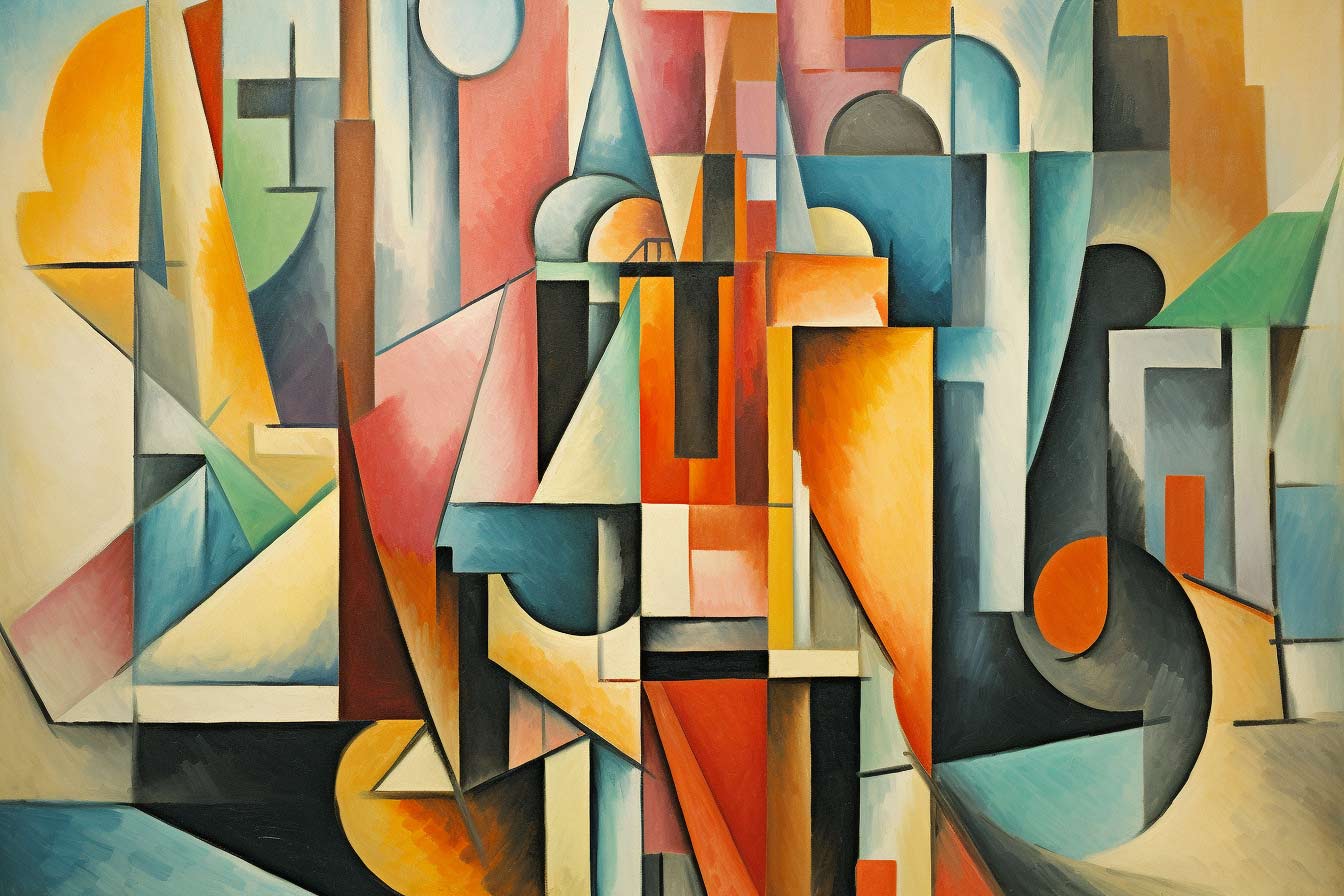Cubism Bot
Explore beyond the biographies. Whether you’re fascinated by Cubist techniques, symbolism, or its impact on modern art—you now have a dedicated space to ask questions and dive deeper into its legacy.
➡️ Begin your journey with a few free questions.
Henri Le Fauconnier: The Vanguard of Cubist Visions
In the winter’s embrace of 1881, Hesdin, a quaint town in Northern France, was blessed with the birth of a soul destined to traverse the vanguard of artistic evolution. Henri Le Fauconnier, gifted with an innate ability to perceive beyond the ordinary, began his journey in a world teetering on the precipice of artistic revolutions.
Drawn to Paris, as so many of his contemporaries were, Henri found himself in the throes of an epoch where artistic traditions were constantly being challenged. It was here that the magnetic pull of Cubism ensnared him, urging him to dissect reality into its fundamental geometries, and then to piece it back, not as the world saw, but as he envisioned.
From the vast tapestry of Le Fauconnier’s creations, several masterpieces emerge as luminous testaments to his cubist inclinations:
- “Abundance” (1910-1911) – A celebration of plenitude and fertility, this work is a convergence of form and thematic brilliance.
- “The Signal” (1915) – An intricate mesh of human forms and landscapes, reflecting the interplay of man and nature.
- “Mountaineers Attacked by Bears” (1912) – A vibrant tapestry that speaks of confrontation and nature’s wild fervor.
- “The Huntsman” (1912) – A portrayal of man’s primitive instincts, juxtaposed against the abstract wilderness.
- “The Village” (1912) – A snapshot of rustic life, with its fragmented simplicities and intrinsic charm.
- “Portrait of Jacques Nayral” (1911) – A testament to friendship and admiration, rendered in geometric introspection.
- “Man with a Pipe” (1919) – A contemplative piece that delves into the psyche of its subject, a symphony of thought and form.
- “The Pianist” (1914-1915) – A marriage of music and art, capturing the essence of creative fervor in angular strokes.
- “Head of a Young Girl” (1909) – An early foray into the Cubist realm, exploring the innocence of youth.
- “Still Life” (1913) – An ode to the mundane, elevating everyday objects to a realm of abstract wonder.
However, while Le Fauconnier carved his niche, another luminary, Robert Delaunay, painted his journey across the canvas of time. Born to Paris in 1885, Delaunay’s essence was bound with the rhythm of colours. Enamoured by Cubism, but not confined by it, he ventured forth into ‘Orphism’, where colours sang, danced, and resonated with life’s vibrancy. Sonia, his muse and companion, complemented his artistic voyage, painting their shared world in hues of passion and genius. Yet, as the inexorable march of time dictates, in 1941, Robert Delaunay bid adieu to the world. His legacy, however, remains, radiant as ever, in every stroke and hue he left behind.
Thus, both Le Fauconnier and Delaunay, each with their unique brush strokes, have etched their tales upon the eternal canvas of art, reminding us of the boundless vistas that human vision can traverse.

